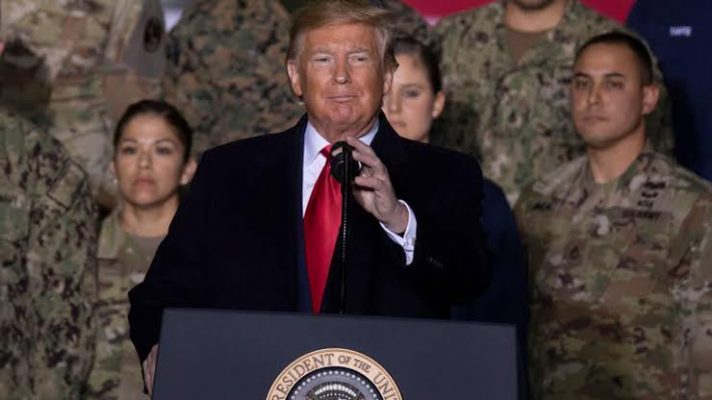
Washington: As nation wide protests against the killing of African-American George Floyd by a policeman in Minnesota continued unabated, President Donald Trump on June 1 promised to mobilise active-duty military assets to deal with growing nationwide protests, with or without the consent of local officials.
“Today I have strongly recommended to every governor to deploy the National Guard in sufficient numbers that we dominate the streets,” Trump said in a national address from the White House’s Rose Garden. “Mayors and governors must establish an overwhelming law enforcement presence until the violence has been quelled.
“If a city or state refuses to take the actions that are necessary to defend the life and property of their residents, then I will deploy the United States military and quickly solve the problem for them.”
Units from the 82nd Airborne Division’s Immediate Response Force, normally stationed at Fort Bragg in North Carolina, are also expected to be deployed to Washington on June 2, according to three Defence Department officials who all spoke on condition of anonymity.
As Trump delivered his remarks, hundreds of protesters outside the White House gates chanted “George Floyd” as local police officials used tear gas and rubber bullets in an attempt to disrupt the gathering.
In his brief remarks, Trump acknowledged Floyd’s death and promised that “justice will be served and he will not have died in vain.”
But he also blamed the growing national unrest on “professional anarchists, violent mobs, arsonists, looters, criminals, and rioters” and vowed that those malicious forces would not be given free reign of America’s streets.
“These are not acts of peaceful protest, these are acts of domestic terror,” he said.
On May 31 night, several historical landmarks were vandalized and set on fire as protests shifted from peaceful demonstrations to violent outbursts. Windows at the Department of Veterans Affairs headquarters — located about one block away from the White House — were shattered by projectiles and signs around the building defaced with curse words and anti-Trump rhetoric.
Trump announced on June 1 that he would be “dispatching thousands of heavily armed soldiers, military personnel, and law enforcement officers to stop the rioting, looting, vandalism, assault, and the wanton destruction of property.”
He also promised to use “all available federal resources, civilian and military, to stop the rioting and looting.”
As Trump spoke, an incredible TV split screen developed around the White House. While he addressed the nation in the White House’s idyllic Rose Garden, a series of military vehicles rolled out front on Pennsylvania Avenue and military police and law enforcement clashed with protesters at Lafayette Park.
Those peaceful demonstrators were cleared so Trump could walk across the park to St. John’s Episcopal Church, known as “The Church of the Presidents,” which suffered fire damage in a protest this week. Holding a Bible, he then stood with several of his Cabinet members as the cameras clicked, including Defence Secretary Mark Esper.
Hours later, Esper, Joint Chiefs Chairman Gen. Mark Milley, Army Chief of Staff Gen. James McConville and Army Secretary Ryan McCarthy pulled up in a caravan of black SUVs to talk with members of the DC National Guard, who were activated to help quell civil unrest.
Milley was the only one to take questions, telling a small group of reporters that he was there to check on National Guard troops, said he hoped to convey the message that everyone’s rights were protected, including the freedom to assemble and freedom of speech.
Earlier in the day, several Republican lawmakers urged the White House to deal with the protest problems by invoking the Insurrection Act, which allows the president to activate federal troops during emergencies to perform certain law enforcement duties, with or without a governor’s request.
More than 17,000 National Guard troops have already been activated in 23 states and the District of Columbia to help with security and crowd control related to the protests.
Prior to that, more than 46,000 guardsmen had been activated to help with states’ response to the Coronavirus pandemic.
According to senior defence officials, between 600 and 800 National Guard members from five states were being sent to Washington to provide assistance. Those troops were either already on the ground or will arrive by midnight.
Thousands of National Guard troops have been activated across the nation to deal with civil unrest.
Earlier in the day, in a conference call with governors, Trump criticised many states’ response to the protests as “weak” and insufficient. He promised to “dominate” the street with National Guard troops.
White House officials did not immediately provide details on what the active-duty mobilisation would include. Pentagon officials in recent days have alerted certain units to prepare for potential domestic mobilisations.








